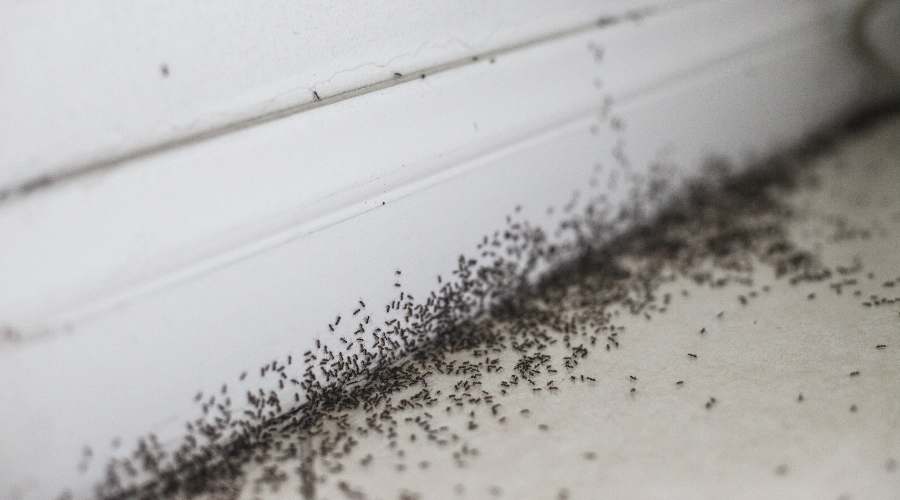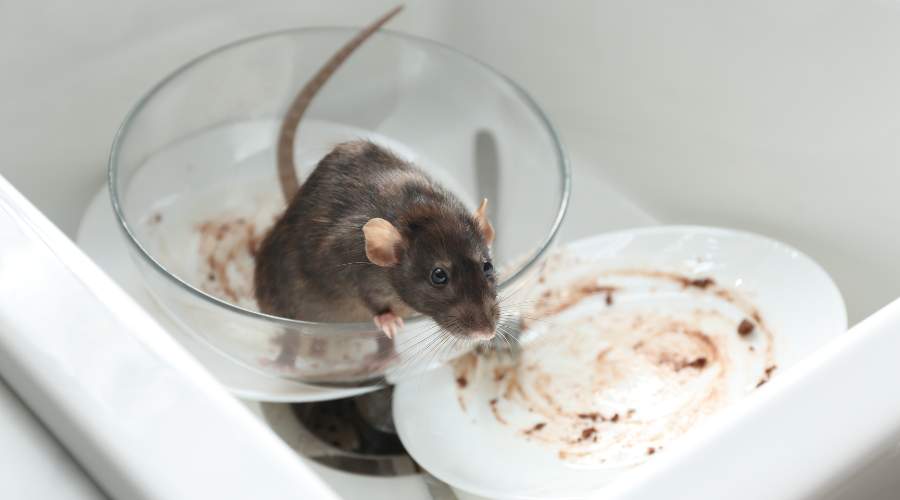How To Identify Pest Infestations
Clues that Reveal a Pest Problem
Finding pests in your home can be unsettling. Roaches skittering across your kitchen floor, ants marching through your pantry, or mice scurrying through walls are sights no homeowner wants to encounter. While the occasional bug that wanders inside can be common, an established pest infestation signals a much larger problem that requires immediate attention.
Left uncontrolled, they pose numerous risks beyond just being a nuisance. They spread germs and bacteria, contaminate your food, and can even cause structural damage to your home. Identifying pest problems early is key to minimising these health risks.
If you suspect a nuisance has invaded your living space, there are telltale signs to look out for. Being able to recognise proof of different house pests is the first step toward addressing an infestation. This guide covers how to identify common signs of infestation or pest activity so you can take prompt action.
Signs of a Cockroach Infestation
Cockroaches are one of the most reviled yet common household pests. They are experts at hiding, but leave behind plenty of clues that reveal their presence:
- Droppings – Cockroach feces look like small black or brown granules, similar to ground pepper. You may find droppings in cupboards, along baseboards, under appliances, and other undisturbed areas.
- Egg casings – Female roaches produce egg capsules that are brownish-yellow and purse-shaped. Look for them in cracks and crevices.
- Molted exoskeletons – As roaches grow, they shed their outer shell. These molted exoskeletons resemble pale brown skins and indicate roaches are actively breeding.
- Strong musty odor – Large cockroach populations give off an unpleasant smell, especially in confined spaces like cabinets.
- Roach sightings – You may catch a glimpse of roaches scurrying away if you enter a room suddenly. They are quick hiders but obvious signs of their presence.
Evidence of an Ant Infestation
Noticing a trail of ants march through your kitchen is a red flag there’s a larger ant colony nearby. Here are other signs ants have set up residence in your home:
- Frantic ant activity – Ants rapidly scurrying in all directions, especially around food packaging, may indicate a nearby nest.
- Mud tunnels – Some ant species build mud tunnels to connect their nest to food sources. Look along baseboards.
- Ant piles – You may find piles of dead ants if you’ve successfully eliminated the colony but missed the nest.
- Winged ants – During mating seasons, winged ants emerge from colonies and end up inside. Spotting them means a nest is likely nearby.
- Sweet scent – Ant pheromones and waste give off a sweet, fruity smell where they’re active.
Signs Mice or Rats Have Infested
Mice and rats are stealthy intruders but they leave plenty of affirmation if you know where to look:
- Droppings – Mouse droppings are small, black, and pointed on both ends. Rat feces are larger with blunt ends.
- Tracks – Look for greasy smear and footprints from its tails dragging.
- Rub marks – Rats and mice leave black grease smudge from rubbing against walls and baseboards.
- Gnaw marks – Teeth indications around doors, holes, pipes, wires, and wood indicate nibbling destroyer.
- Musky – Urine trails and oil from mouse fur give off a strong, musky reek where they are active.
Rodent infestations can create disruptive noise that disturbs sleep from their nighttime activity in void and clutter.
Other Possible Pests and Indicators
Roaches, ants, and others are the most common home invaders but other pests can sneak in as well. Watch for these signs of additional unwelcome inhabitants:
- Spider webs – Cobwebs in undisturbed corners or around vents may mean a spider infestation.
- Small flies – Drain and fruit flies breeding indoors point to unsanitary conditions they are feeding on.
- Discarded skins – Skins and shell casings from bugs like bed bugs and termite infestation indicate an existing population.
- Odd reek– Stink bugs and some beetles give off unpleasant scents from glands.
- Visual sightings – Directly observing unwanted guests like silverfish, centipedes, and earwigs signals an infestation.
Conduct a Thorough Pest Inspection
Noticing one or two of the above signs may simply mean a passing pest wandered in by mistake. But repeated proof of roaches, ants, mice, or others likely means they have settled into your home.
For proper identification, you need to inspect closely in areas where they are likely to breed and nest. Look at these common problem flecks:
- Kitchen and bathrooms – especially under sinks and appliances
- Cracks and crevices along furniture, divider and baseboards
- Attic and basement spaces
- Around pipes, drains, vents, and utilities entry points
- Cluttered storage areas like garages and closets
- Behind and under refrigerators, stoves, dishwashers, and washing machines
- Inside cabinets, drawers, and pantries where supply is stored
A thorough inspection along with identifying pest signs will reveal if an infestation exists and how advanced it is. This information is vital for implementing proper treatment and control.
When to Call a Pest Control Professional
At the first sign of roaches, mice, ants, or other pests, take action before the problem worsens. Eliminating one or two is manageable on your own with products from your hardware store.
However, once clear indicators of an established pest population are present, the infestation is likely beyond what simple do-it-yourself remedies can treat. Contact a licensed pest control company immediately if you find:
- Significant insect activity in multiple rooms
- Roaches during the day – a sign the infestation is severe
- Rodents actively entering and exiting holes
- Pest droppings and physical damage in multiple areas
- Pests have lived there undiscovered for some time
Facing a pest problem right when you spot it gives you the best chance of eliminating it. Ignoring early signs of an infestation allows it to grow out of control and makes pest removal much harder and more costly.
Knowing how to identify the pests empowers you to take prompt action. Safeguard your home and family by staying alert for the critical signs of an unwanted pest invasion.
Frequently Asked Questions
What are some of the most common household pests?
The most frequent type of pest found infesting homes are roaches, ants, mice and rats, spiders, flies, bed bugs, termites, and stink bugs.
How can I find where pests are entering my home?
Inspect along baseboards, windows, doors, attic vents, pipes, drains, and any cracks or openings in your home’s exterior for signs of pest entry like rub marks or droppings.
Can pets get sick from an infestation?
Yes, pets can get sick from pests that carry diseases, and parasites, or contaminate their meal and water. Pets can also suffer pest bites or stings.
How often should I inspect for pests?
Do a quick visual inspection monthly. Conduct a thorough inspection of your entire home every 3 months to catch any larger pests before major infestations start.
What should I do if I have signs of pest infestation?
At the first signs, use DIY methods for minor pest sightings. For established infestations evident throughout your home, contact a licensed exterminator immediately for pest professional treatment and removal.
Conclusion
Living with pests puts your home and health at risk. Catching infestations early allows for quicker, less disruptive elimination. Now that you know what signs to look out for, you can identify pests right away. If you suspect an infestation, take prompt action by either using DIY methods or calling in pest control experts.
Being proactive and inspecting regularly lets you stop pests before they become established and ruin your home. Protect your house and family by keeping a close eye out for the first signs of an impending presence of pest problem.





